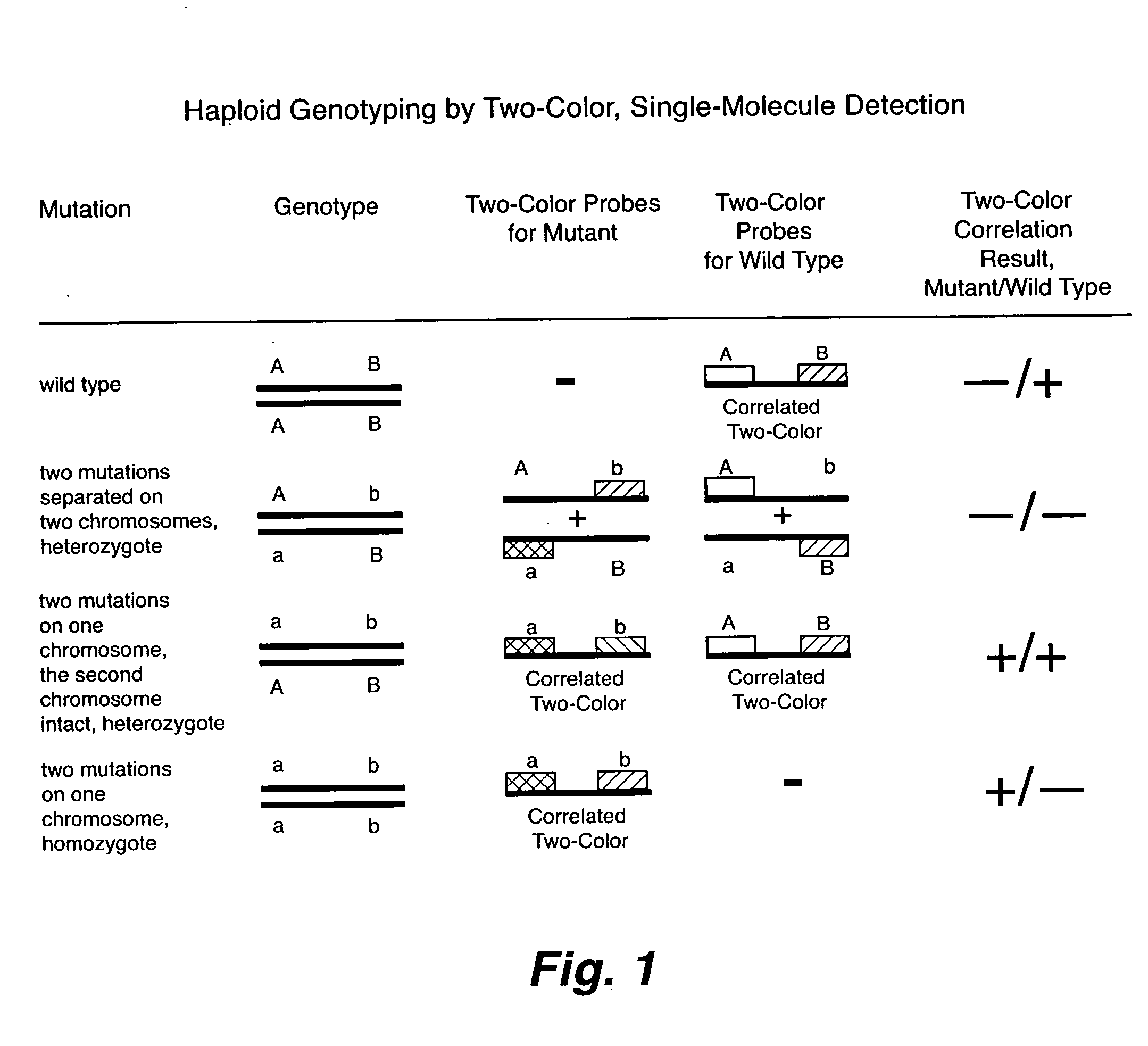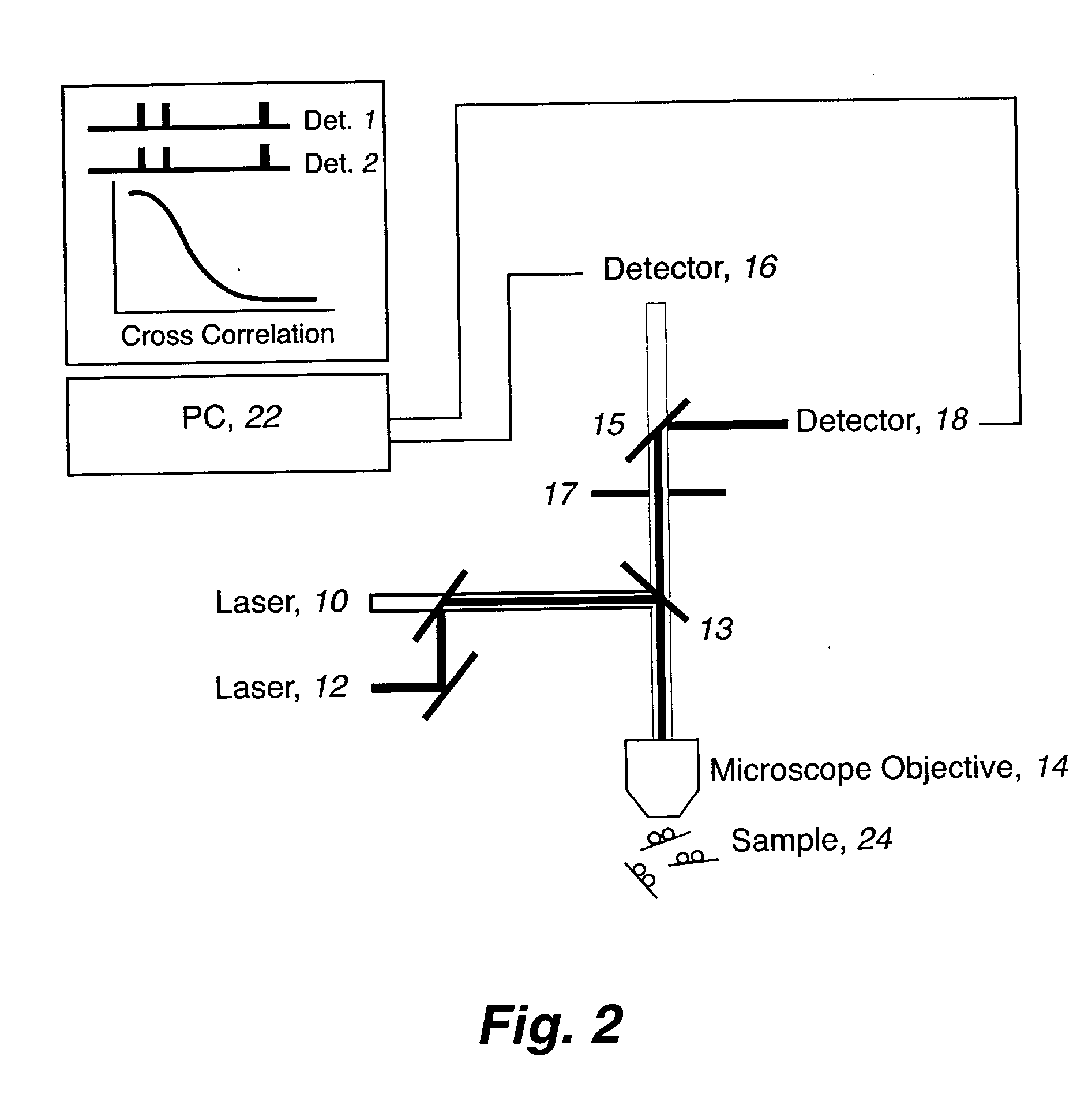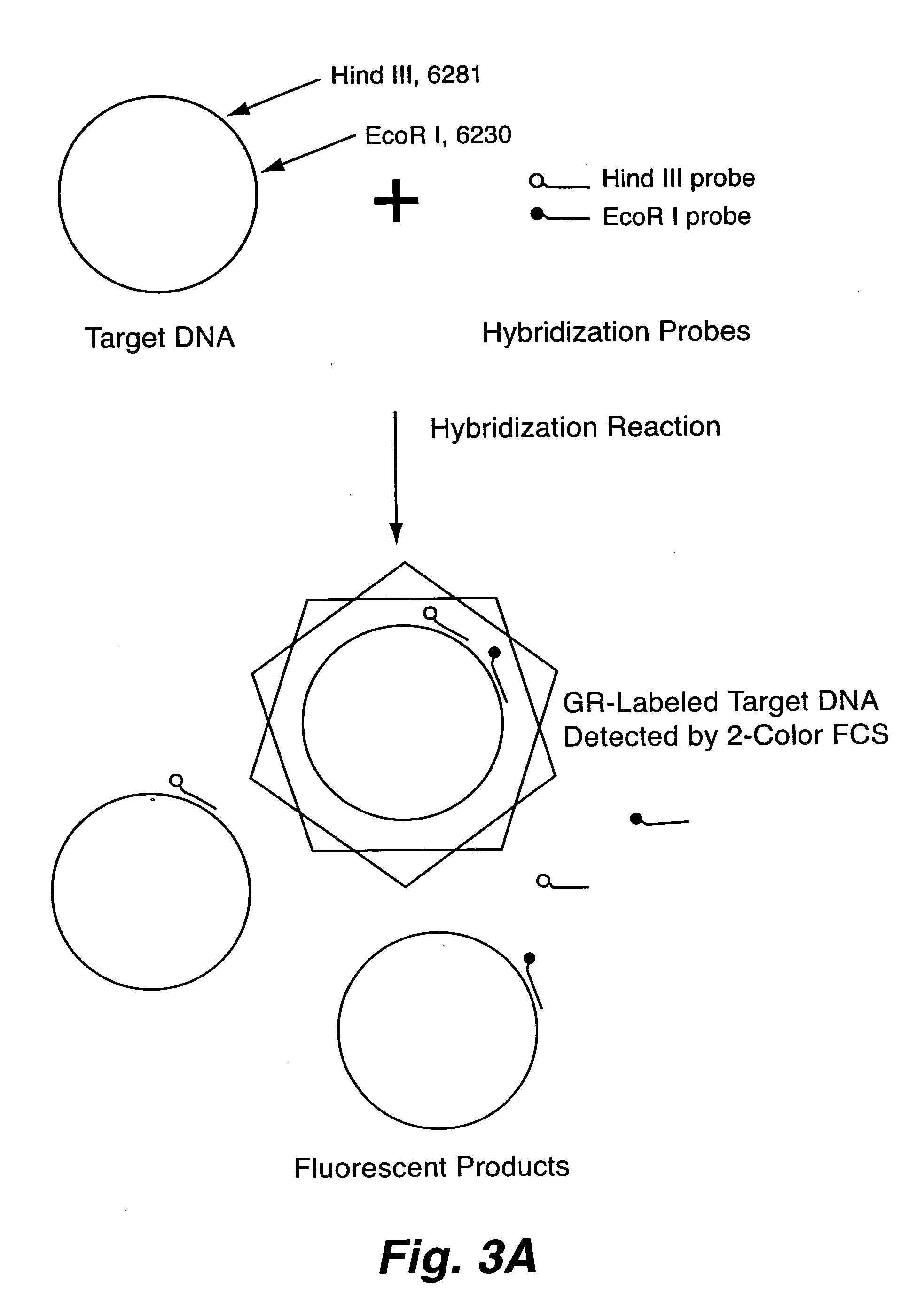Rapid haplotyping by single molecule detection
- Summary
- Abstract
- Description
- Claims
- Application Information
AI Technical Summary
Benefits of technology
Problems solved by technology
Method used
Image
Examples
example 1
Leukemia Chimera Detection
[0082] In abnormal circumstances (such as some cancers), segments of genes may be recombined together, forming a so called chimera gene that is composed of incomplete parts of two genes. Traditionally, these hybrid genes are detected in a three step process using reverse transcriptase polymerase chain reaction (RT-PCR) amplification of mRNA; PCR amplification and DNA sequencing; and northern / southern blots or minisequencing. In accordance with the present invention, the amplification steps are eliminated and the two halves of the chimera gene messenger RNA are simultaneously detected using differently labeled fluorescent hybridization probes and fluorescence correlation spectroscopy (FCS). Since single molecule haplotyping can distinguish between a double and a single label, this method can distinguish between the chimera, which will be doubly labeled, and the singly labeled wild type transcripts present on separate messenger RNA molecules.
[0083] One exam...
example 2
HLA Haplotying
[0090] One example of a region where haplotyping is critical for successful organ transplants is the human leukocyte antigen (HLA) gene. The method of the present invention is used pairwise on a set of variant alleles in this case. Preliminary work will be conducted on a set of synthetic oligonucleotide templates (haplotypes) containing a subset of the relevant sequence variants, where the variant alleles are underlined and the space represents a sequence of bases, e.g., a kb in length, separating variant alleles in the templates, where the missing sequence is not needed to construct a probe:
A*02011 / A / TT / GT[SEQ ID NO: 10]5′tggcagctcagaccaccaagcacaagtgggag[SEQ ID NO: 11]. . . gcggcccatgtggcggagcagttgagagcctacctggagggcacgtgcgtggagtggctccgcagatacctggaga-3′A*0212 / A / CA / GT[SEQ ID NO: 12]5′tggcagctcagaccaccaagcacaagtgggag[SEQ ID NO: 13]. . . gcggcccatgtggcggagcagcagagagcctacctggagggcacgtgcgtggagtggctccgcagatacctggaga-3′A*0236 / A / TT / CG[SEQ ID NO: 14]5′tggcagctcagaccacccaagac...
PUM
| Property | Measurement | Unit |
|---|---|---|
| Molar density | aaaaa | aaaaa |
| Concentration | aaaaa | aaaaa |
| Volume | aaaaa | aaaaa |
Abstract
Description
Claims
Application Information
 Login to View More
Login to View More - R&D
- Intellectual Property
- Life Sciences
- Materials
- Tech Scout
- Unparalleled Data Quality
- Higher Quality Content
- 60% Fewer Hallucinations
Browse by: Latest US Patents, China's latest patents, Technical Efficacy Thesaurus, Application Domain, Technology Topic, Popular Technical Reports.
© 2025 PatSnap. All rights reserved.Legal|Privacy policy|Modern Slavery Act Transparency Statement|Sitemap|About US| Contact US: help@patsnap.com



